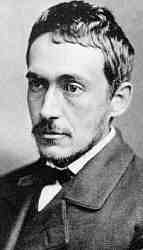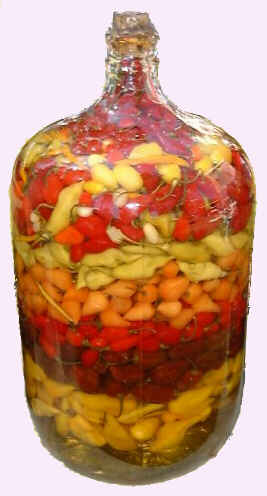 ^
Born on 25 July 1844: Thomas Couperthwaite
Eakins, in Philadelphia.
^
Born on 25 July 1844: Thomas Couperthwaite
Eakins, in Philadelphia. — Philadelphian Realist painter, photographer, teacher. Eakins was the husband of Susan Macdowell Eakins. He studied under Gérôme and Léon Bonnat. Eakins' students included Thomas Anshutz and Henry Ossawa Tanner. Eakins died in Philadelphia on 25 June 1916.
— Most recognized for insightful, poweful portraits. Controversial teacher; a powerful influence upon Robert Henri. 1862-1866 Pennsylvania Academy of the Fine Arts; 1864-1865 attended anatomy classes at Jefferson Medical College; 1866-1869 École des Beaux-Arts under Gérôme and Bonnart; 1869-1870 in Spain, influenced by Velazquez and Ribera; 1870 returned to Philadelphia, resided there rest of his life; 1872-1875 produced major sculling and sailing works; 1875 first teaching position at Pennsylvania Academy of the Fine Arts; painted Portrait of Professor Gross (The Gross Clinic); 1876 The Gross Clinic rejected as a work of art [too gross?] but exhibited in U.S. Army Post Hospital at 1876 Centennial Exposition; 1877 left Pennsylvania Academy of the Fine Arts but returned in 1878; 1878-1882 gained increasing reputation for instruction, for direct teaching of anatomy from human dissection; 1882 became director of Pennyslvania Academy of the Fine Arts; 1884 married his student, Hannah Susan MacDowell; February 15, 1886 four years' controversy over his didactic methods and use of nude models culminated in his resignation from Pennsylvania Academy of the Fine Arts; February 22, 1886 founded Philadelphia Art Students' League with nucleus of former students from Pennsylvania Academy of the Fine Artsãthis small group was active for the next seven years; 1886 during ten weeks in summer and autumn lived the life of a cowboy in Badlands of the Little Missouri (southwestern North Dakota); 1888-1889 painted The Agnew Clinic; 1896 had his only lifetime one-man show (Philadelphia); 1899 death of his father provided an inheritance with additional financial independence; 1880-1905 worked extensively with photography, including 1884-1885 collaboration with Edweard Muybridge in Philadelphia on photography of movement; 1888-1907 lectured at New York Art Students' League; 1892-1908 produced a large body of work including boxing and wrestling pictures.
— Thomas Eakins was a one of the foremost US realist painters of the 19th century. Working independently of contemporary European styles, he was the first major artist after the US Civil War (1861-1865) to produce a profound and powerful body of work drawn directly from the experience of US life.
Eakins studied drawing at the Pennsylvania Academy of the Fine Arts from 1861 to 1866. His concurrent study of anatomy at Jefferson Medical College led to a lifelong interest in scientific realism. Eakins spent three years in Paris from 1866 to 1869, where he studied at the École des Beaux-Arts. He was strongly influenced by 17th-century masters, particularly the Dutch artist Rembrandt and the Spanish painters Josepe de Ribera and Diego Velazquez. These masters impressed him with their realism and psychological penetration. He returned to Philadelphia in 1870 and lived there the rest of his life.
Eakins's paintings depict scenes and people observed in the life around him in Philadelphia, particularly domestic scenes of his family and friends. He exercised his scientific inclination in paintings of sailing, rowing, and hunting, where he delineated the anatomy of the human body in motion. He painted several large and powerful hospital scenes, most notably The Gross Clinic (1875), which combined sharp realism — a depiction of an operation in progress — with psychological acuity in the portrayal of the surgeon, Doctor Gross.
As director of the Pennsylvania Academy of the Fine Arts, Eakins introduced an innovative curriculum,including thorough study of anatomy and dissection as well as scientific perspective, which revolutionized the teaching of art in America. His insistence on study from the nude scandalized the school's authorities, however, and he was forced to resign in 1886.
During the later part of his career, Eakins's scientific interests were overshadowed by his preoccupation with psychology and personality, and in his art he concentrated principally on portraiture — studies of friends, scientists, musicians, artists, and clergymen. In addition to their masterly evocation of personality, these portraits are characterized by uncompromising realism and by a sculptural sense of form, which is evident in the strong modeling of the sitters' heads, bodies, and hands. Typical of his full-length portraits is The Pathetic Song (1881), with the standing figure of a singer in a rich silk gown silhouetted against a dimly lighted music room.
Although none of his paintings brought him financial or popular success, Eakins had a profound influence, both as a painter and as a teacher, on the course of American naturalism. His realistic approach to painting was ahead of his time.
— LINKS
— Walt Whitman — Self~Portrait — The Gross Clinic — Starting Out After Rail — Baby at Play — Concert Singer — The Pathetic Song — Max Schmidt in a Single Scull — The Swimming Hole — Miss Van Buren
— Study "Negress" (1869, 58x50cm) — Frank Jay St. John (1900, 61x51cm) — Professor William Woolsey Johnson (1896, 61x51cm) — The Courtship (1878, 51x61cm)

